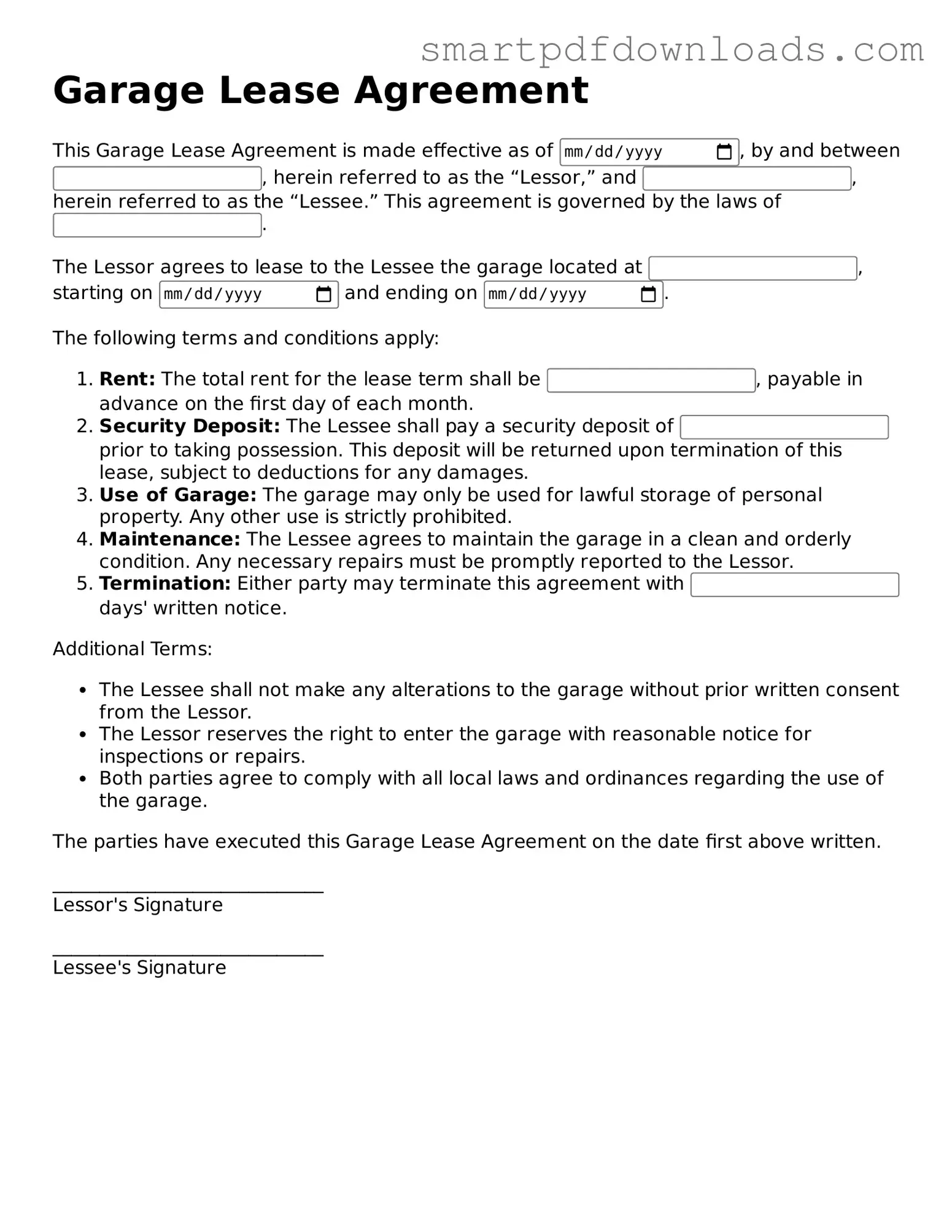Free Garage Lease Agreement Form
A Garage Lease Agreement is a legal document that outlines the terms and conditions under which one party leases a garage space to another. This agreement serves to protect the interests of both the landlord and the tenant, ensuring clarity in responsibilities and expectations. Understanding this form is essential for anyone looking to rent or lease garage space effectively.
Edit Garage Lease Agreement Online
